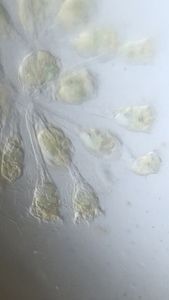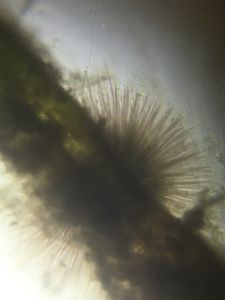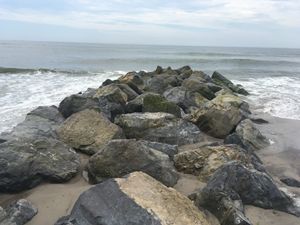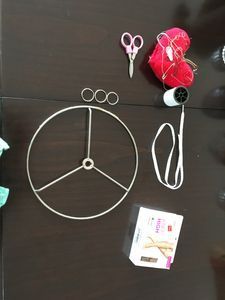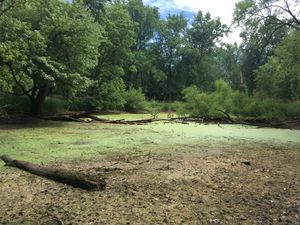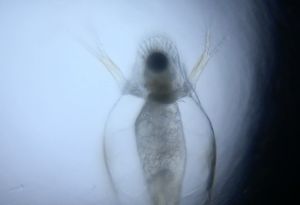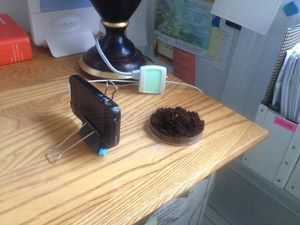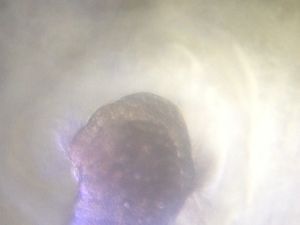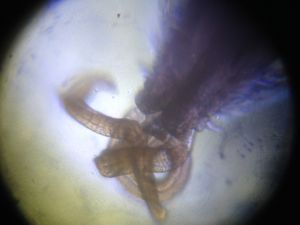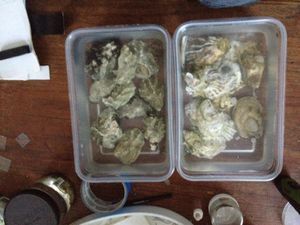Bee Hotel
 May 29, 2017 • 1:11 PM UTC
May 29, 2017 • 1:11 PM UTC Unknown Location
Unknown Location 140x Magnification
140x Magnification Unknown
Unknown
Matthew Rossi
I'm a novelist, essayist, and a writing consultant. I work in the writing centers at Columbia and Baruch University and explore research into the overlap of maker cultures and writing. My work with the Foldscope tends to focus on finding wild creatures in urban spaces and looking at how human works are shaped by the movements of the biosphere.
40posts
105comments
4locations


Today, my partner and I took advantage of some perfect weather and a day off to walk around one of MSU’s gardens and enjoy some nature curated and cultivated in a human aesthetic. As an agricultural school, Michigan State has any number of gardens to sit in and read, and for today’s garden, we’re sitting in a horticultural demostration garden.

At one end of the garden, tucked away, the garden’s curators have created a strange sort of craft project. A bee hotel built of tiny bird houses full of tiny straws and drilled holes. A sign outside explains that most bees are solitary sorts, preferring a single dwelling to a hive. Though they’re useful pollinators and good at eating pests, they don’t make honey as such and they live in small holes. Like those in the bee hotel. A peak into one of these with my hand lens reveals one of its denizens poking its head out like an old man leaning out into the hall in a flop house.

On the edge of its tubular cell, a pile of yellow dust made me wonder, what could that be? I had an idea, but I also had my microscope on hand. So no need to merely guess. I could look. I gathered a pile from one room into the well of a slide, and took a look.


Theory confirmed: it was a pile of pollen left behind by one of the bees. As food, I suspect. I showed this to some children walking by, who were less concerned with the pollen than with a general worry about the bees. But then another pile made me wonder. Were all the bees eating the same pollen? A separate pile of powder gave me a chance to check this out.


The shape of each grain of pollen is completely different in this pile. What’s more, they aren’t mixed types of pollen, as I would expect if they were eating generally. So I think that they must be eating from one plant or another. This could either be because a single species prefers a single plant or it could be because I am looking at a single meal from a single bee on a single day of the year.
Regardless it reminds me of the joy of using these instruments as field microscopes and that discovering what exists on the smallest levels can show us not just what is there, but can illuminate how the creatures around us live.
Regardless it reminds me of the joy of using these instruments as field microscopes and that discovering what exists on the smallest levels can show us not just what is there, but can illuminate how the creatures around us live.
Sign in to commentNobody has commented yet... Share your thoughts with the author and start the discussion!
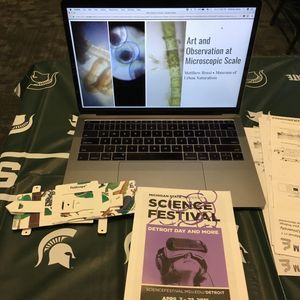
 0 Applause
0 Applause 0 Comments
0 Comments



